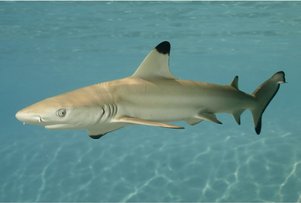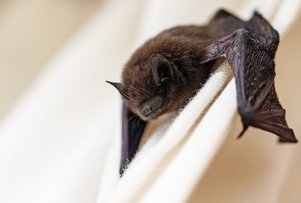The Scoop:
Driving their prey batty
A small crustacean or mollusk lives under the ocean floor, burrowing into the sand for protection. The bat ray knows how to flush them out, however, by hovering near the ocean floor and rapidly flapping their long fins.
The resulting current sweeps away the sand, and the exposed crustacean or mollusk becomes easy prey. Their strong jaws first crush their victims, and after spitting out the hard shells the bat ray will grind down the meat and then eat.
The bat ray also will use its long, protruding snout like a shovel to dig into ocean bottoms in search of food.
The bat ray gets its name because its dark brown fins look similar to the wings of a bat. They lurk at night in the sandy-bottom bays along the shores of Oregon, California and the Galapagos Islands. During the day, they often retreat to deeper, cooler waters far from shore.
Bat rays have been known to swim close to the surface, sometimes jumping several feet into the air. They are hunted by great white sharks.
Quick Facts:
- Bat rays are popular in public aquariums because they are relatively easy to care for in captivity.
- A bat ray wing is nearly twice as long as its body.
- Females often grow much larger than males, and have been measured to be nearly 200 pounds and six feet from fin to fin.
Other Facts:
- When threatened, the bat ray can sting with the venomous spine in its tail. The sting is not considered dangerous to humans.
- Bat rays are docile enough that people often are allowed to touch their fins in aquariums.
- A female bat ray can have a litter of up to 12.







